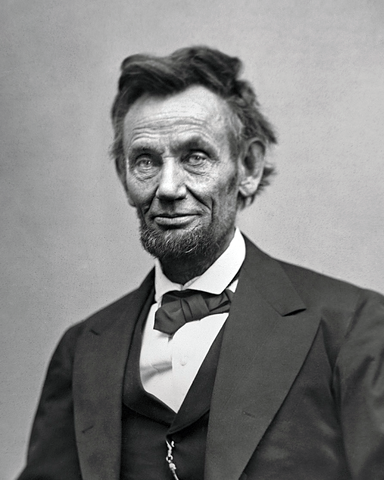The Wrack
The Wrack is the Wells Reserve blog, our collective logbook on the web.
The Wrack is the Wells Reserve blog, our collective logbook on the web.
 President Abraham Lincoln, February 1865. He looks tired.
President Abraham Lincoln, February 1865. He looks tired.
The following was published in the Biddeford-Saco Journal Tribune Sunday edition, 4/26/2015.
One hundred and fifty years ago this month, the Civil War staggered to a bloody and exhausted end. Our nation lay in ruins: our national psyche fractured, half our economy and infrastructure reduced to ashes, 750,000 battlefield casualties (1 in 10 white men in America of military age lay dead). Why did we fight those four long years, at such cost to country and kin?
Any middle school student, when asked to name the cause of the American Civil War, will undoubtedly reply: slavery. It was deemed, at the time, worth fighting for, because it was inextricable from the South’s economy. The returns from investing in slave labor are immense; their costs are buried in the fields or swept into the future. All that was necessary to own and profit off of slaves was a denial of slavery’s inhumanity towards man. Deny the costs and slaves, throughout history, become free energy.
Pharaoh’s Egypt, Caesar’s Rome, and the tenuously united states of America in 1850 were civilizations erected by shackled human muscle. And it wasn’t just the pyramids, the Coliseum, and the Southern plantations that were built with free labor – the sprawling economies of those nations were enabled by the slaves toiling at their foundations.
“In 1860, slaves as property were worth more than all the banks, factories and railroads in the country put together,” Civil War historian Eric Foner told a reporter for The Nation last year. For the low costs of shabby quarters and meager rations, slave owners got cleared lands, tilled fields, and millions of bales of cotton. Black slaves were brought from Africa initially, then bred in captivity, a nearly limitless supply of energy to profit from.
The plantation owners weren’t the only profiteers. Here in the industrial North in 1850, the textile mills of New England were successful because of the flow of slave-harvested cotton from the South. On one hand, Northern abolitionists decried the institution of slavery, but on the other, their lives were bettered by the cheap goods and flourishing economy made possible by Dixie’s harvest of sorrow. We built our nation, “the land of the free,” on the backs of the enslaved.
Is it any surprise that slavery, so essential to our national prosperity, was the only issue to ever bring war within our borders? The “original sin” of our country’s creation, in the words of Founding Father James Madison, ensnared us all in its problem. Madison, Thomas Jefferson, and Patrick Henry owned slaves, despite their acknowledgement of slavery’s ills. A melancholy Henry wrote that he could not free the men and women he owned because of “the general inconvenience of living without them.” If slavery was so integral to the economy, what took its place once President Lincoln made the Emancipation Proclamation on New Year’s Day, 1863?
In the closing months of the Civil War, an industrious young entrepreneur (and abolitionist) named John D. Rockefeller bought out the partners of his Cleveland oil refinery and formed, a few years later, his titanic Standard Oil. Rockefeller foresaw the country’s evolution from one seductively “free” energy source to another. After all, we were a country addicted to low prices and ever-increasing production.
By 2008, fossil fuels provided almost 85% of the energy used in the United States, according to the National Academy of Sciences. If that isn’t the definition of dependence, I don’t know what is. Though we’ve known for decades the high costs of digging up and burning oil, coal, and natural gas – wars in the Mideast, pollution, health effects, environmental destruction, global warming – we’ve also enjoyed the immense benefits of all that black gold. Science, and now morality, implore us to find cleaner, more guilt-free energy sources, but that may ultimately be even harder than abolishing slavery.
When the place I work at, the Wells Reserve at Laudholm, recently went “100% solar” for all our electricity needs, folks applauded, but some also asked whether weaning the rest of our society off fossil fuels was really possible. “It can’t be done,” said at least one friend. I replied: “that’s what they said about slavery." I also thought of the words of Nelson Mandela, who said “it always seems impossible, until it’s done.”
Nik Charov is president of Laudholm Trust, the nonprofit partner of the Wells National Estuarine Research Reserve in Wells, Maine. His Sunday column, “Between Two Worlds,” ventures forth from the intersection of art and science, past and future, industrial North and agrarian South. More at wellsreserve.org/twoworlds.